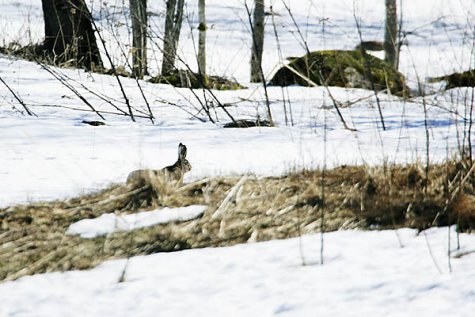Mammals in Winter – White Hare
Photo: Arne Ader
Translation: Liis from Forum
White or mountain hare.
| White Hare | Lepus timidus |
The white hare (also known as mountain hare, tundra hare, blue hare) has had a better winter this year than the previous black and bare ones when a white coat meant danger: the change in colour of the hare’s coat is supposed be a protection on a snowy ground. But on a brown-patterned forest ground this snowy white coat will instead catch the eyes of predators. Although the hare according to zoologists is not at all dumb, and will avoid moving around in such a snowy coat in snowless winters, the succession of bare winters has reduced the numbers of white hares in places. Some white hares have begun to shed their summer coats later.
The white hare is the smaller of our two hares, and the one that is “really ours”. It came to the area of today’s Estonia immediately after the last Ice Age. The brown hare, Lepus europaeus, arrived here only a few hundred years ago. The white hare keeps mostly to forests, the brown hare to fields.
On freshly fallen snow it is worthwhile to go out into a forest to look for the aspen-nibbler’s tracks. They are easily recognised on snow: two holes side-by-side (back paws), two in a goose row (forepaws). And so the line goes on: two side-by-side, two one-by-one. The side-by-side tracks are bigger because the hare’s hind legs are much mightier than its forepaws.









